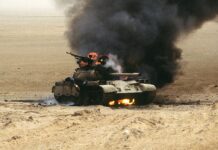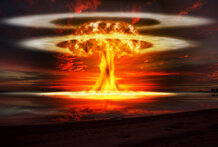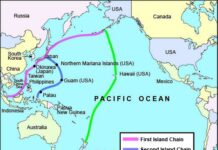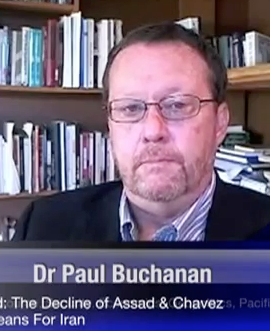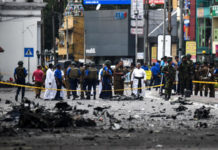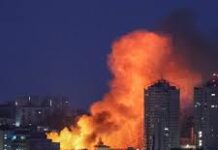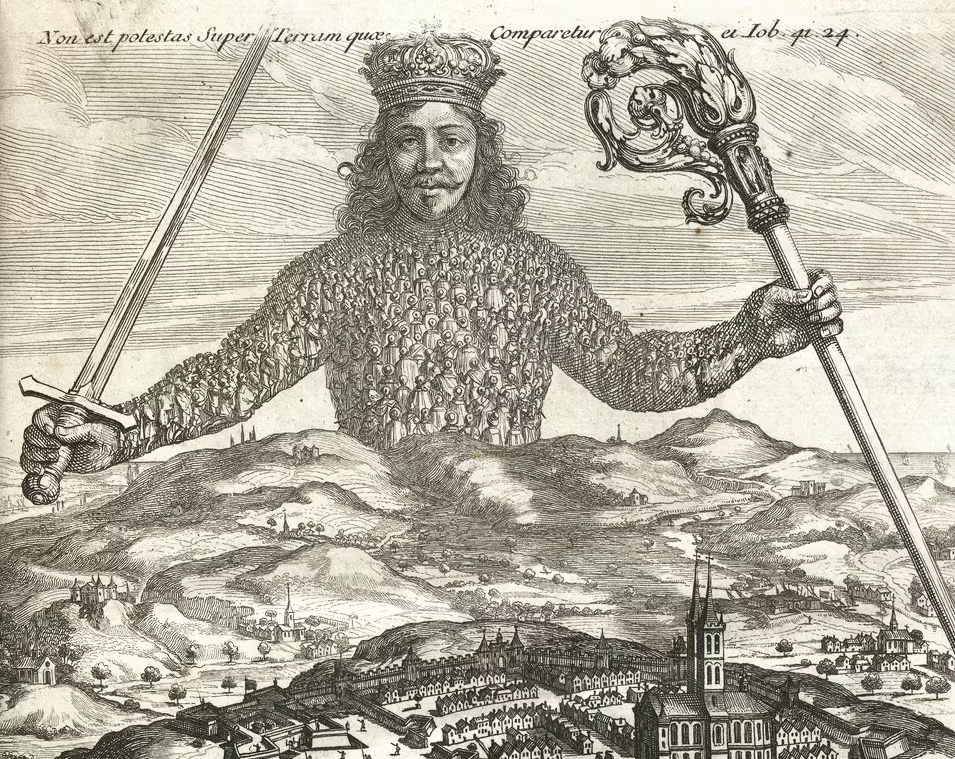Status of Forces Report Part 2: Military Professionalism in the South Pacific.
36th Parallel Assessment Series – By Paul G. Buchanan
Introduction:
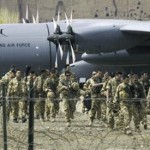 In Part One of the the Status of Forces series, 36th Parallel Assessments offered an overview of typologies of military forces and civil-military relations. Designed as an introduction to the subject for readers and clients, it also serves as a starting point for more in-depth analysis of the militaries that currently operate from permanent stations in the region, be they in their home territory or as part of extended overseas basing networks.
In Part One of the the Status of Forces series, 36th Parallel Assessments offered an overview of typologies of military forces and civil-military relations. Designed as an introduction to the subject for readers and clients, it also serves as a starting point for more in-depth analysis of the militaries that currently operate from permanent stations in the region, be they in their home territory or as part of extended overseas basing networks.
There are currently seven “resident” militaries in the South Pacific: those of Australia, Chile, Fiji, France, New Zealand, Papua New Guinea and Tonga. Although the US has a presence in the South Pacific, to include the recent deployment of the first company in what will become a permanent 2500-troop strong US Marine Task Force stationed in Darwin, it shall be treated as an extra-regional actor for the purposes of this analysis (it should be noted that the Marines being re-deployed to Darwin are doing so as part of an agreement with Japan to reduce the US military presence in Okinawa, which has also seen the shifting of Marines to Guam. It is therefore a re-positioning of Western Pacific Marine assets rather than an increase in them). Likewise, Ecuador and Peru have naval forces on the Southeastern Pacific perimeter, but they do not have a blue water presence or permanent land bases off-shore that would justify their inclusion.
Four of the South Pacific militaries are variations of the traditional professional model: Australia, Chile, France and New Zealand. In each country the military as an organization is subordinate to elected civilian authority and primarily has an external focus. The Australian and French armed forces are examples of expeditionary forces, those that are organized and trained to fight overseas. That includes a logistics and supply capability that permits ongoing off-shore combat operations. In Australia’s case it has become a major ally of the US and serves, to a great degree, as the “deputy sheriff” of the US in the Southwestern Pacific and Indian Ocean Areas of Responsibility (AORs). Its strategic outlook dovetails with that of the US accordingly. France home ports its Pacific Fleet in Papeete, French Polynesia and has sizable land-based garrisons there and in New Caledonia. Although these garrisons are designed to reinforce French sovereignty over its territorial possessions and thus have internal security functions within them, they constitute overseas deployments for the soldiers involved and are combat-ready (local and mainlander gendarmes do domestic policing). French military forces in the South Pacific are not as integrated into US strategic planning as are Australian forces, but nevertheless exercise and share intelligence with their Antipodean and US counterparts.
The strong Prussian orientation of the Chilean officer corps made impossible significant reforms within the military institution until the former military president and armed forces commander in chief Agusto Pinochet Ugarte died in 2006.
The New Zealand Defence Forces are by far the smallest of the traditional professional militaries in the South Pacific, and are characterized by an overt orientation towards international peace-keeping. They do not have a combat air force and have limited naval power projection capability. Although it has a well-respected elite Special Air Services unit that has served in a number of conflict zones including Afghanistan and (reportedly) Iraq, the Army spends as much time on its combat engineer and medicine deployments as it does on combat operations. This is in line with New Zealand’s long-standing peace-keeping orientation, which has seen its forces recently serve in places as disparate as Bosnia, Lebanon, the Sinai, Solomon Islands and East Timor. Like the other three traditional militaries in the region, the NZDF prides itself on its professional integrity and autonomy from partisan politics.
Australian and New Zealand military and police provide security coverage for all of the Pacific Island countries other than Fiji, Papua New Guinea and Tonga that are not covered by the US or France. These include Manu Samoa, Nauru, Kiribati, Niue, the Cook Islands, and the Solomons.
 Fiji is the largest and longest-established of the Pacific Island Country (PIC) militaries. It has a long and distinguished record of international peace-keeping service, and has sent its troops into battle (and lost many) alongside other British Commonwealth nations, where they have distinguished themselves with their bravery and warrior spirit. However, although it has given the appearance of a new professional military from time to time (that is, one that divides internal and external security functions more or less equally and which is largely independent of civilian oversight), in the last 15 years the Republic of Fiji Military Forces (RFMF, known as Fiji Military Forces) have reverted to first an arbitrator and now a ruler praetorian role.
Fiji is the largest and longest-established of the Pacific Island Country (PIC) militaries. It has a long and distinguished record of international peace-keeping service, and has sent its troops into battle (and lost many) alongside other British Commonwealth nations, where they have distinguished themselves with their bravery and warrior spirit. However, although it has given the appearance of a new professional military from time to time (that is, one that divides internal and external security functions more or less equally and which is largely independent of civilian oversight), in the last 15 years the Republic of Fiji Military Forces (RFMF, known as Fiji Military Forces) have reverted to first an arbitrator and now a ruler praetorian role.
The military regime currently is preparing the framework for the holding of general elections in 2014, but the question of a full relinquishing of power in favor of civilian government remains an open question.
After an initial suspension in 2007, the RFMF has been restored to UN peace-keeping contributor status, with Fijian military observers currently stationed in Lebanon and Syria. However, it is barred from participating in Commonwealth and Pacific Island Forum-mandated multi-lateral military operations (in the latter case, such as the RAMSI mission in the Solomon Islands), and was not invited to join the International Security Assistance Force (ISAF) in Afghanistan even though another PIC military, that of Tonga, joined the coalition. Fijian officers and officer candidates are barred from Commonwealth and US military training and exercises, so have increasingly turned to the People’s Republic of China (PRC) for military training and education exchanges and, in a limited way, operational exercises. Because military service has traditionally been seen as an avenue for upward mobility and a major source of hard currency income for lower class families (since international service entailed payment in US dollar or Euro rates), the prohibitions on international peace-keeping was a major source of concern for the Baimimarama regime. It has solved the problem by allowing RFMF personnel to serve in foreign militaries such as that of the UK or with private security companies (PMCs) in conflict zones. In addition, the Fijian Defense Ministry and RFMF are involved in a private-public security partnership in the form of Fiji Defence Logistics (FDL), which offers logistical and operational support to private and public agencies abroad. These three vehicles of military labor absorption had had the dual effect of guaranteeing hard currency remittances (which are a third of the GDP) while providing career opportunities for officers and soldiers otherwise sitting idle in barracks at home (since even very generous bureaucratic placement of military personnel cannot absorb all of the excess capacity and requires a different skill set than that possessed by most RFMF soldiers).
At present the RFMF retains a strong internal focus, to the point of armed intervention in domestic security matters. The concerns with regard to its Fijian military professionalism are two-fold:
- will it continue to retain an active, if not dominant position in any future civilian government, and if so, in what way?
- what will be the effect of prolonged involvement in government on the RFDF fighting capability?
Bilateral military-to-military ties with the PRC are a potential avenue for reconciling the two concerns because the Chinese model of civil-military relations presumes a dominant role for the military in conjunction with a strong party and allied state bureaucracy. A future military-backed civilian party that was led by a retired military officer and supported by the military “colonists” within the state bureaucracy would, if elected on open and competitive grounds, be eligible for resumed international security duties, thereby restoring its combat orientation and edge. Even so, difficulties in agreeing to a framework for the holding of elections and international opposition to military involvement in a post-2014 government make the transition to a so-called “professional revolutionary” typology of military institutionalism problematic (but not impossible).
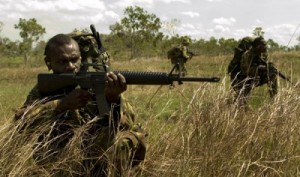 The Papuan New Guinea Defence Forces (PNGDF) are a classic example of military praetorianism. Larger conflicts in civil and political society are played out within the officer and non-commissioned officer corps. This has impinged on corporate autonomy, standards of training and operational readiness. Army-dominant and formally organized around the concept of external defense, in practice the PNGDF has since independence been largely dedicated to internal security functions, including counter-insurgency operations such as those against Bougainville secessionists in the early 1990s that resulted in numerous human rights violations and atrocities against civilians and which precipitated the infamous “Sandline Affair” where private mercenaries attempted to put down the insurrection after PNGDF failures, only to be ordered out of the country by the government of the day.
The Papuan New Guinea Defence Forces (PNGDF) are a classic example of military praetorianism. Larger conflicts in civil and political society are played out within the officer and non-commissioned officer corps. This has impinged on corporate autonomy, standards of training and operational readiness. Army-dominant and formally organized around the concept of external defense, in practice the PNGDF has since independence been largely dedicated to internal security functions, including counter-insurgency operations such as those against Bougainville secessionists in the early 1990s that resulted in numerous human rights violations and atrocities against civilians and which precipitated the infamous “Sandline Affair” where private mercenaries attempted to put down the insurrection after PNGDF failures, only to be ordered out of the country by the government of the day.
Simmering tensions persists between the PNGDF and the PNG Police Force (which is considered to be more factionalized and less professional than the PNGDF due to persistent ethnic tensions within it)
Although in comparative terms, relative to other branches of the PNG state, the PNGDF is considered to be moderately stable, internal factionalization, low levels of recruitment and retention, budgetary constraints and limited professional training and education opportunities have impeded the professional development and orientation of the armed institution as a whole. Australia continues to provide training and education liaison services for PNG defense personnel and PNG military officers have begun to participate in limited military outreach programs offered by the PRC. Even so, ongoing political crises and simmering social tensions reverberate within the military institution to the point that it remains an open question as to its reliability as a cohesive combat organization.
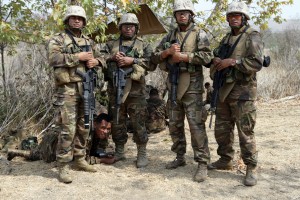 Tonga represents a novelty in that it is undergoing the transition from a praetorian to a new professional military. Traditionally inward-oriented and at the service of the King (something seen in its deployment during the Nuku’alofa riots in 2006), the Tongan Defence Services (TDS) have during the last decade participated in international security operations, most notably as part of Operation Iraqi Freedom (2004-2008) and the International Security Assistance Force (ISAF) mission in Afghanistan (2011-present). Since 2002 TDS personnel have also participated in the RAMSI peace-keeping and enforcement mission in the Solomon Islands. With a very small complement of 500 soldiers, this means that the majority of uniformed personnel have overseas combat and peace-keeping experience, making them arguably the most field tested of all of the current PIC militaries. Tonga has defense cooperation agreements with Australia, New Zealand, the US, the UK, and more recently India and China. In 2011 the PRC and Tonga signed a military aid grant agreement by which the PRC would transfer several million dollars worth of non-lethal military equipment to Tonga free of charge. Tongan military officers attend training and educational exchange programs with all of these defense partners, and exercise regularly with Australian, US and New Zealand defense forces in search and rescue (SAR) and humanitarian assistance operations.
Tonga represents a novelty in that it is undergoing the transition from a praetorian to a new professional military. Traditionally inward-oriented and at the service of the King (something seen in its deployment during the Nuku’alofa riots in 2006), the Tongan Defence Services (TDS) have during the last decade participated in international security operations, most notably as part of Operation Iraqi Freedom (2004-2008) and the International Security Assistance Force (ISAF) mission in Afghanistan (2011-present). Since 2002 TDS personnel have also participated in the RAMSI peace-keeping and enforcement mission in the Solomon Islands. With a very small complement of 500 soldiers, this means that the majority of uniformed personnel have overseas combat and peace-keeping experience, making them arguably the most field tested of all of the current PIC militaries. Tonga has defense cooperation agreements with Australia, New Zealand, the US, the UK, and more recently India and China. In 2011 the PRC and Tonga signed a military aid grant agreement by which the PRC would transfer several million dollars worth of non-lethal military equipment to Tonga free of charge. Tongan military officers attend training and educational exchange programs with all of these defense partners, and exercise regularly with Australian, US and New Zealand defense forces in search and rescue (SAR) and humanitarian assistance operations.
Exposure to combat operations with larger professional military forces such as those of the US and the UK are considered to be a significant step towards the corporate professionalization of the TDS as well as an impediment to its involvement in domestic politics short of a national emergency. In fact, the orientation of the TDS towards traditional military professionalism and foreign field experience is consonant with the gradual liberalization of the Tongan political system under King (George) Tupou V and expected to continue under King (Aho’eitu) Tupou VI. This places the TDS in stark contrast to the Fijian and Papua New Guinea defense forces, both of which are deeply embroiled in domestic politics that some believe impacts negatively on their operational readiness, corporate cohesion and command discipline.
Summary:
The South Pacific contains a mix of militaries ranging from fully professional large expeditionary forces to small “niche” peace-keeping contingents and internally-oriented praetorian militaries that directly involve themselves in governance. Although the general trend is towards increased military professionalism throughout the region, events in Fiji and Papua New Guinea argue against wholesale acceptance in Melanesia of traditional models of civil-military relations based on military subordination to elected civilian authority, while in Tonga the military remains, as in the case of Thailand, firstly at the service of the King rather than society at large in spite of its significant degree of professionalism and a gradual move towards genuine democratic rule. With military to military ties between the PRC and PICs expanding in recent years, the possibility of them adopting a version of the professional revolutionary or new professional models of civil-military cannot be discounted.
Futures Forecast:
Praetorianism will continue to characterize Fijian and PNG military relations of the next few years, to the detriment of their combat capabilities. Tongan military professionalism will continue to improve as a consequence to its exposure to and interaction with larger professional military forces in conflict zones overseas. Australia’s military will evolve into that of a major regional power, with New Zealand increasingly integrated into its force planning. France will maintain the current status quo with regards to its regional military presence, and Chile will continue to develop its blue water fleet and logistical and lift capabilities as it asserts its status as the dominant Southeastern Pacific power.


